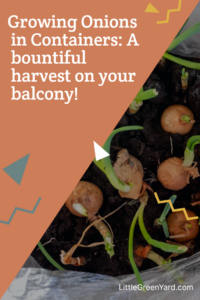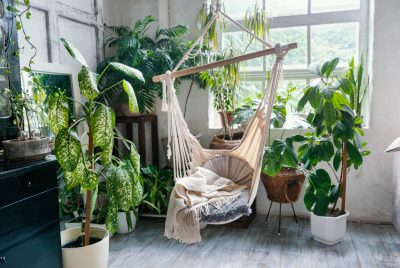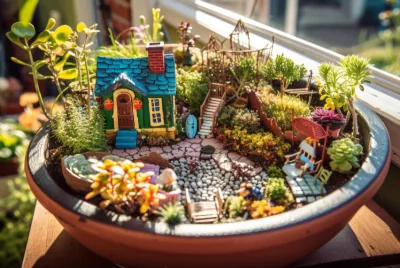Growing Onions in Containers: A bountiful harvest on your balcony!
Are you a gardening enthusiast with limited space but a longing for fresh, homegrown produce? Well, look no further! I’m here to share my passion for gardening in small spaces and offer advice on how to grow onions in containers. With a little creativity and some handy tips, you can enjoy a bountiful harvest right on your balcony. In this article, I’ll guide you through the process of maximizing your container space, the ease of growing onions, storing excess onions, and provide helpful suggestions to ensure your gardening endeavor is a success.
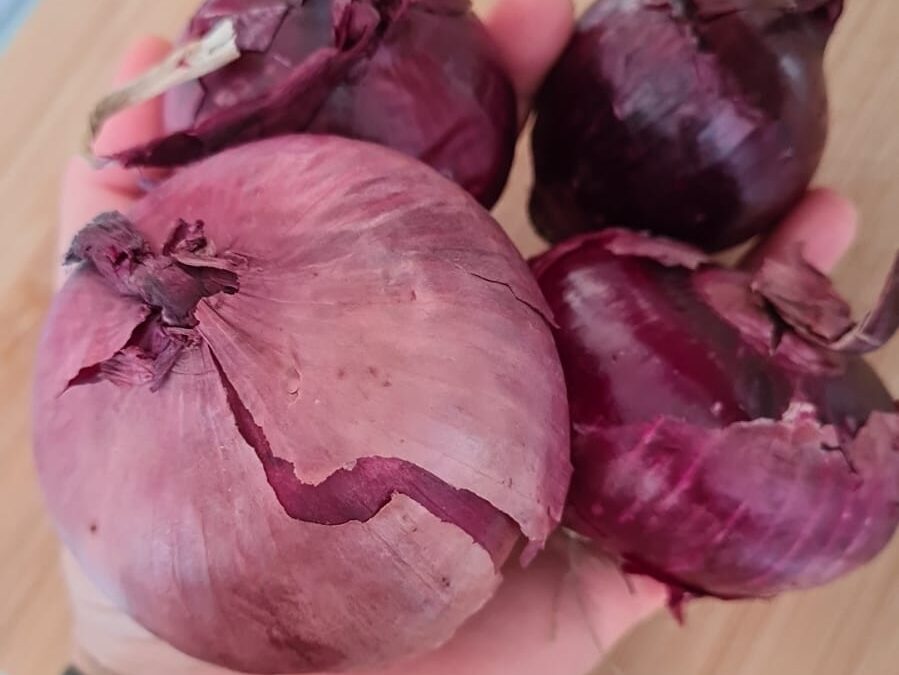
Maximizing Space: Container Gardening on Your Balcony
One of the joys of container gardening is that it allows you to utilize every inch of your available space. It is a versatile and space-efficient way to cultivate a wide variety of plants, from flowers and herbs, to vegetables and small fruit trees. Whether you have a tiny apartment balcony or a cozy patio, you can transform it into a green oasis.
- Choosing the right containers: From traditional pots to hanging baskets or even repurposed items like old buckets and wooden crates. Regardless of the container, the key is that the containers need to have adequate drainage holes to prevent waterlogging. The size of the container should match the plant’s growth requirements, ensuring there’s enough space for roots to expand.
- Quality Potting Mix: Use a high-quality potting mix specifically designed for container gardening. Buy a high-quality potting mix specifically formulated for container gardening. Avoid garden soil, as it may be too compact and not provide adequate drainage. Mix in a generous amount of compost to enrich the soil with nutrients. To prevent soil compaction over time, add perlite or vermiculite to improve aeration.
- Watering: Container plants may require more frequent watering than those in the ground. Monitor the soil’s moisture level and water when the top inch feels dry. Be consistent but avoid overwatering.
- Sunlight: Most container plants need plenty of sunlight. Ensure they receive the appropriate amount of light based on their specific requirements, whether it’s full sun, partial shade, or shade-loving plants.
- Fertilizing: Container plants benefit from regular fertilization, as nutrients can wash out of the soil more quickly than in-ground gardens. Use a balanced, slow-release fertilizer or liquid fertilizer according to the plant’s needs.
- Plant Selection: Choose plants that are well-suited for containers. Compact varieties and those with shallow root systems are ideal. Popular choices include tomatoes, peppers, herbs, succulents, and ornamental flowers.
- Maintenance: Regularly inspect your container plants for signs of pests, diseases, or nutrient deficiencies. Prune dead or yellowing leaves, and repot or divide plants when they outgrow their containers.
Our friend, Mattias, has an excellent article on his top 3 preferred containers, including re-using food-safe containers from the grocery store, buying inexpensive food-grade plastic buckets, and even making his own grow bags!
Selecting the Right Onion Varieties
When it comes to growing onions in containers, choosing the right onion varieties is crucial. Opt for compact and quick-growing varieties like green onions (scallions) or shallots. These varieties are well-suited for limited spaces and mature faster, allowing you to enjoy your harvest sooner.
Growing Onions in Containers: Easy and Hassle-Free
- Choose Onion Sets: You can plant onions from seeds or onion sets (small bulbs). Onion sets are convenient for beginners and produce quicker results.
- Planting Depth: For onion sets, plant them about one inch deep and space them 3-4 inches apart in all directions. If you’re sowing seeds, follow the packet instructions for spacing.
- Positioning: Place your container in a location that receives full sun. Onions need at least 6-8 hours of sunlight daily for optimal growth.
- Watering: Keep the soil consistently moist but not waterlogged. Watering when the top inch of soil feels dry is a good rule of thumb. A drip tray under the container can help prevent overwatering.
- Fertilize: Onions appreciate a balanced fertilizer. Apply a slow-release granular fertilizer or liquid fertilizer every 3-4 weeks during the growing season.
- Thin if Necessary: If your onions start growing too close together, thin them out to the recommended spacing. You can use the thinned onions in your culinary endeavors.
- Harvesting: When the green foliage starts to yellow and topple over, it’s time to harvest your onions. Gently lift them from the container, shake off excess soil, and allow them to air dry for a few days before storage.
Harvesting and Storing Your Onion Bounty
When the green foliage starts to yellow and topple over, it’s time to harvest your onions. Gently lift them from the container, shake off excess soil, and lay them out to dry for a few days in a well-ventilated area. You can also store excess onions for future use. Here are a few methods:
- Braiding: If you’ve grown green onions, you can braid their leaves together and hang them to air dry. This allows you to use them gradually.
- Mesh Bags: Store mature onions in mesh bags or burlap sacks. Keep them in a cool, dark, and dry place, such as your pantry or cellar.
- Freezing: Chop onions into small pieces and freeze them for future culinary use. This method preserves their flavor remarkably well.
Helpful Suggestions for Container Gardening Success
Here are some additional suggestions to ensure your success and maintain the longevity of your container garden:
- Regular Maintenance: Keep an eye on your container’s moisture levels and fertilize as needed. Prune any dead or yellowing leaves to promote healthy growth.
- Companion Planting: Consider companion planting with onions to deter pests. Garlic, tomatoes, and lettuce are excellent companions for onions.
- Rotate Crops: If you’re growing other vegetables in containers, practice crop rotation to prevent soil depletion and disease buildup.
- Stay Organic: Use organic gardening practices whenever possible to ensure your produce is as healthy and chemical-free as possible.
- Enjoy the Process: Gardening is not just about the end result; it’s about the journey. Savor every moment, from planting to harvesting.
Take a look at my onions:
Growing onions in containers is not only practical but also immensely rewarding. With the right container, soil, and care, you can enjoy a bountiful harvest of fresh, flavorful onions right on your balcony. After to master the skills of gardening in containers, there are other vegetables that you can try out! For example, here is a guide to grow carrots in containers, and my other post on growing pumpkins in containers! If you ever try out other vegetables, be sure of share them in the comments below, I’d love to hear about it! So, roll up your sleeves, put on your gardening gloves, and embark on this exciting journey to turn your small outdoor space into a thriving garden.
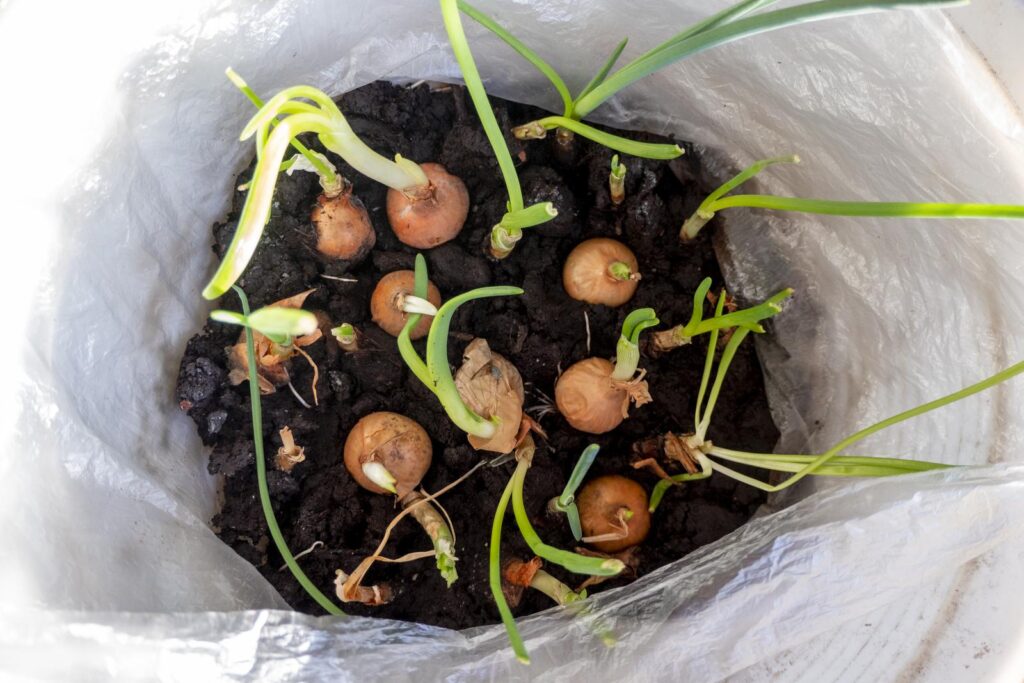
FAQs:
1. Can I grow onions in any type of container? Absolutely! Onions can be grown in a variety of containers, from pots to buckets to hanging baskets. Just ensure they have proper drainage.
2. How long does it take to grow onions in containers? Depending on the variety, onions can take anywhere from 60 days (green onions) to 100-120 days (bulb onions) to mature.
3. Do I need to worry about pests when growing onions in containers? While pests can be a concern, companion planting with garlic and other compatible vegetables can help deter them.
4. Can I grow onions indoors in containers? Yes, you can! Just ensure they receive plenty of sunlight, preferably from a south-facing window or using grow lights.
5. Are there any special tips for fertilizing onions in containers? Use a balanced, slow-release fertilizer, and follow the recommended application rates on the packaging to avoid over-fertilization.
